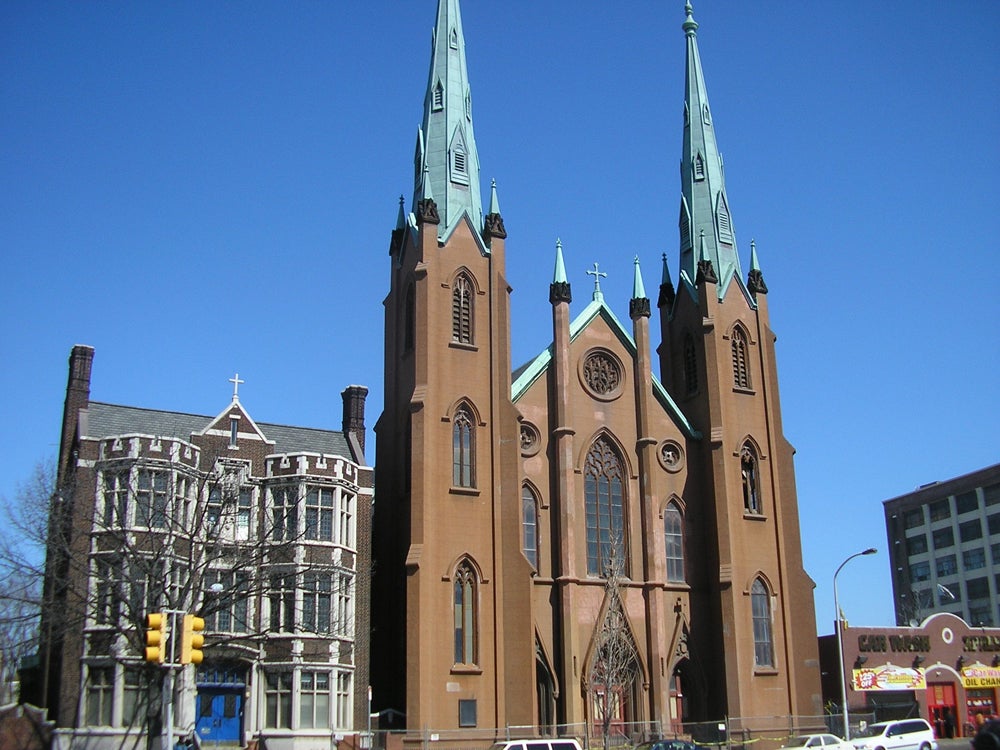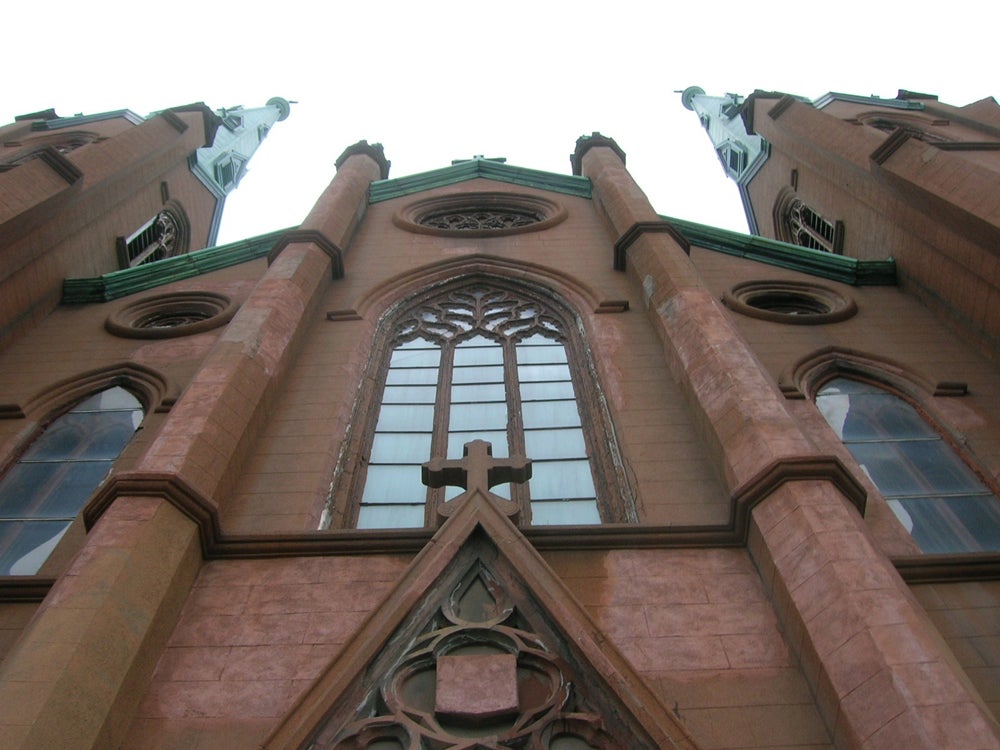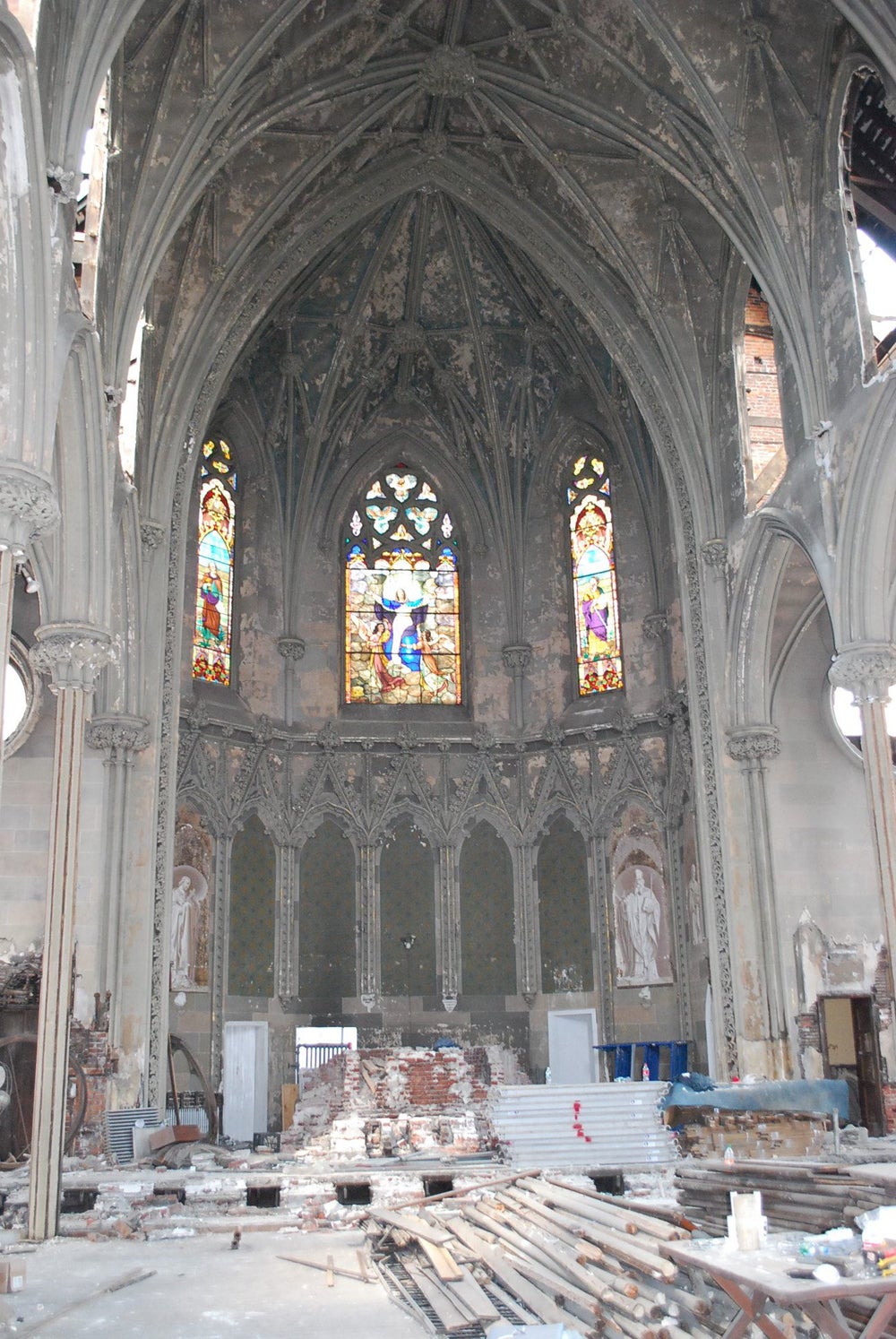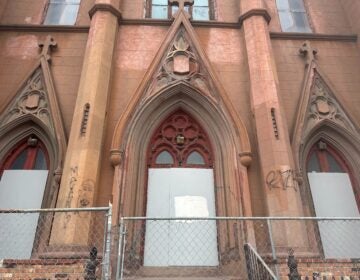State historical commission seeks to block Church of the Assumption demolition
(PlanPhilly intern Kimberley Richards contributed to this article)
The Pennsylvania Historical and Museum Commission has entered the battle over the fate of the Church of the Assumption, with its chairman Wayne Spilove vowing to do whatever he can to ensure that the building survives.
Spilove, a prominent developer in the Rittenhouse Square area and a former chair of the Philadelphia Historical Commission, this week wrote a letter to Siloam, the social service agency that owns the church, stating that state funds provided to the church in 2007 should be used for finding a way to restore, not demolish, the historic building.
Meanwhile, the Callowhill Neighborhood Association has filed an appeal to the Board of Licenses & Inspections Review to overturn the Sept. 10 vote of the PHC to allow Siloam to raze the church building based on financial hardship. Siloam, which provides services for people living with HIV/AIDS, has said it does not have the $5 million required to restore the church, or even the $1.5 million estimated it would take to stabilize the structure for future renovation. The Callowhill civic group expects to learn in four to six weeks when the hearing will take place.
According to Spilove, the PHC should have “tabled it, talked about it and explored other possibilities” for the church at the two-and-a-half-hour hearing last month, when the commission voted 6-5 to grant the owner’s application for demolition. It had voted in May 2009 to list the church on the Philadelphia Register of Historic Places.
The Church of the Assumption was designed and built in 1848-49 by the most prolific ecclesiastical architect in the U.S. at the time, Patrick Charles Keely. It also has strong historic and religious significance involving two individuals who were canonized by the Catholic Church. John Neumann consecrated the Church of the Assumption and Katharine Drexel was baptized there.
For a church to have historic connections to two saints is extremely unusual, Spilove said in an interview today. “Also, the building is gorgeous. When we saved the Eastern State Penitentiary we heard the same things about the building – that it was unstable and there was no life in it. It’s 15 years later, and that building is still making money” through tours and holiday events.
“With what’s going on around the city, along Spring Garden Street and North Broad Street, you have an asset with that church building that could never be duplicated. That area could pop as soon as federal stimulus money becomes available,” Spilove said. “That church should not come down. We think it should be on the National Register of Historic Places. With its architecture and what took place there, it falls into the criteria.”
In the letter to Siloam Executive Director Joseph Lukach, Spilove wrote that the Pennsylvania Historical and Museum Commission must be “consulted on the design and proposed location of any project, building or other undertaking financed in whole or in part by Commonwealth funds, which may affect the preservation and development of a district, site or building listed on or eligible for the Pennsylvania Register of Historic Places. (By PHMC policy, the National Register of Historic Places serves as a the Pennsylvania Register.)”
The letter also states that the “primary consideration in all Commonwealth investments is: Redevelop First.”
“Any Commonwealth funding that has been provided to Siloam in the past or it may receive in the future related to the church should be used for seeking and planning for alternative uses for this building and maintaining it until another use can be found. Demolition of this building does not benefit the neighborhood or the city.
“Commonwealth funding priority should be for preservation not demolition. The granting of public funds to demolish this historic building is contrary to the laws of Pennsylvania,” the letter says.
In 2007, Siloam received $300,000 from the state Department of Community and Economic Development for “abandoned building demolition.”
Andrew Palewski, who wrote the nominating letter that earned local historic designation for the church, said Siloam has spent $140,000 on asbestos removal, bird-fouling removal, and interior demolition, leaving about $160,000. Palewski, who has championed the preservation of the building at the historical commission hearings, said Siloam was obligated to return the funds to the state because it had missed the deadlines to use the money.
Lukach did not return a request for comment.
Siloam has received an estimate of $164,000 to demolish the church building, Siloam attorney Kevin R. Boyle said at the Sept. 10 hearing.
John Gallery, executive director of the Preservation Alliance for Greater Philadelphia, said the Pennsylvania Historical and Museum Commission had not been aware that DCED had provided a grant to demolish the building. Gallery said he informed the PHMC of the grant and noted that is against the law to use the remaining money without consulting with the state commission.
“Unfortunately, the commission has no teeth,” Gallery said. “DCED can ignore that if they want to. But we’re hoping that DCED would recognize that this is a serious policy issue to use state money to demolish a historic building and would not allow their remaining funds to be used for that purpose.
“The letter is very important because it very strongly states PHMC’s concern, and hopefully it will have some effect.”
If DCED informs Siloam that the state funds can’t be used for demolition, Siloam would have to find the money from another source.
Contact the writer at ajaffe@planphilly.com.
WHYY is your source for fact-based, in-depth journalism and information. As a nonprofit organization, we rely on financial support from readers like you. Please give today.







